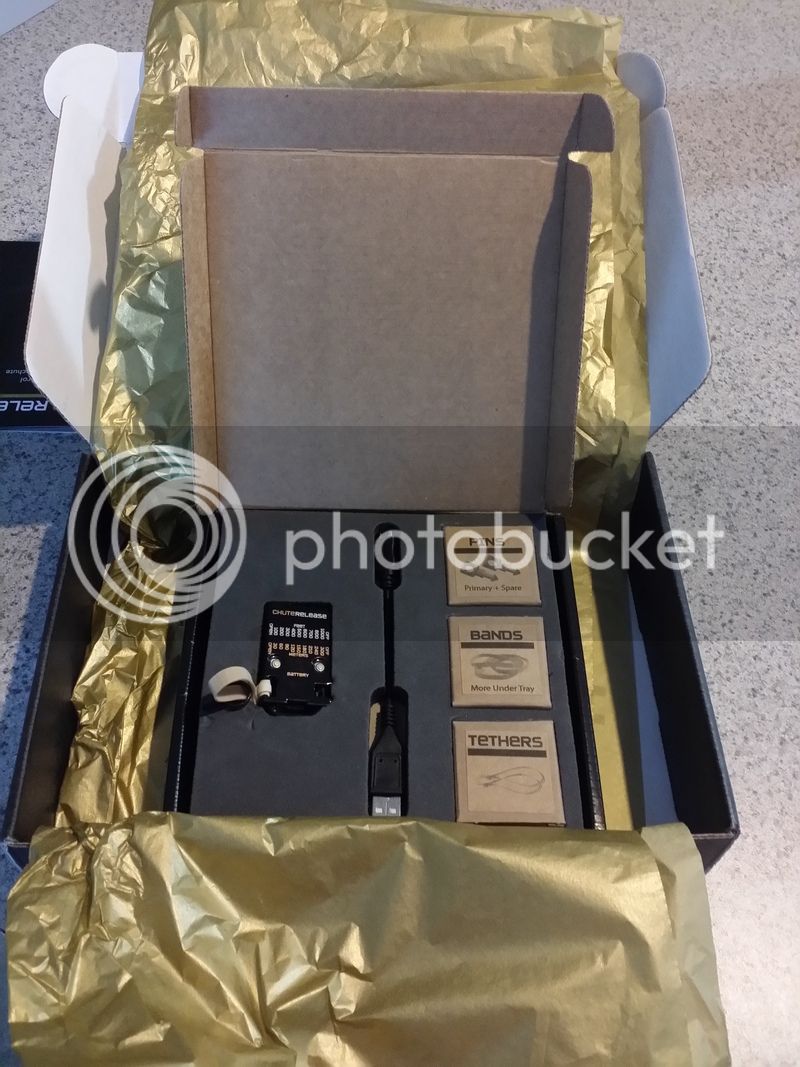I'm very interested in this setup. How is the drogue/pilot attached to the main?
Nate
Easy,
Pat from Dino parachutes sewed the loop at the apex of the Dino chute. As I mentioned, this worked fine with the Archetype/Prairie Twister pyrotechnic cable cutter but I wasn't able to witness the deployment on my only flight with it so far due to the small size of the rocket and the distance the flight entailed. A ziptie can really hold the package together quite tightly. I cut that grey, high density
packing foam "jammer" from some packing I received in some sort of shipment or another. Been saving stuff like that for awhile so's
now I gets some use out of it.:wink:
I'm not so certain, like John mentions that the rubber restraint would hold as well.
But.............. If one felt the need to test the package with the Chute Release I believe it could be done with minimal risk. Just simply use a motor combination that would say give a lower apogee where one could tolerate an early main deployment if that were to occur. Follow the descent visually till the main release. If one observes that the rubber restraint is adequate for their application, it could be usable if sending a project to "sight unseen" land.
I think the drogue at chute apex could be helpful at colder temps where the nomex might be a bit stiffer and help get the main out of the chute protector.
If flying at warmer temps, the drogue on the harness/nosecone is totally workable and I've use it myself.
I've had a few "Hail Mary" descents where the nosecone came out and the chute hung in the tube only to work out in a nick of time before disaster.
A pilot/drogue on the nosecone can assist with getting the chute package out of the tube if the charge is not enough.
Part of the reason for the drogue at the chute apex was some folks observed that their chute hung in their chute protector when using the pyrotechnic
cutter. A lot of folks will release the main at a lot higher altitude than what I see folks doing with the JLCR. That technically gives a chute more time to
work itself out of the bag. That might be needed as the remnants of a ziptie, though broken, might remain about the bag and act as some restraint.
The rubber restraint of the JLCR may not have as much holding power as a ziptie but it will pop free and away from the chute package more readily in
my estimation and is leading to the high already seen success rates.
I had one flight where I had a 36" pilot on a deployment bag for a large main chute and between the pilot and the drogue that was down below on the sustainer, there wasn't enough change in velocity to get the main out of a tightly packed bag! Caught it on video as the main was blown at 900' and saw the harness/chutebag with the 36" pilot deployed but the main stayed in the bag.
Soft dirt saved the rocket that flies to this day. When I previously flew with a 48" pilot I actually thought was too large, the same main chute (I think was 96") worked just fine. This scenario really doesn't apply for the JLCR because it was for such a large configuration and though some adventurous folks are
going to be experimenting with larger projects, I hope they consider some sort of tracking device for insurance on those flights! Kurt






